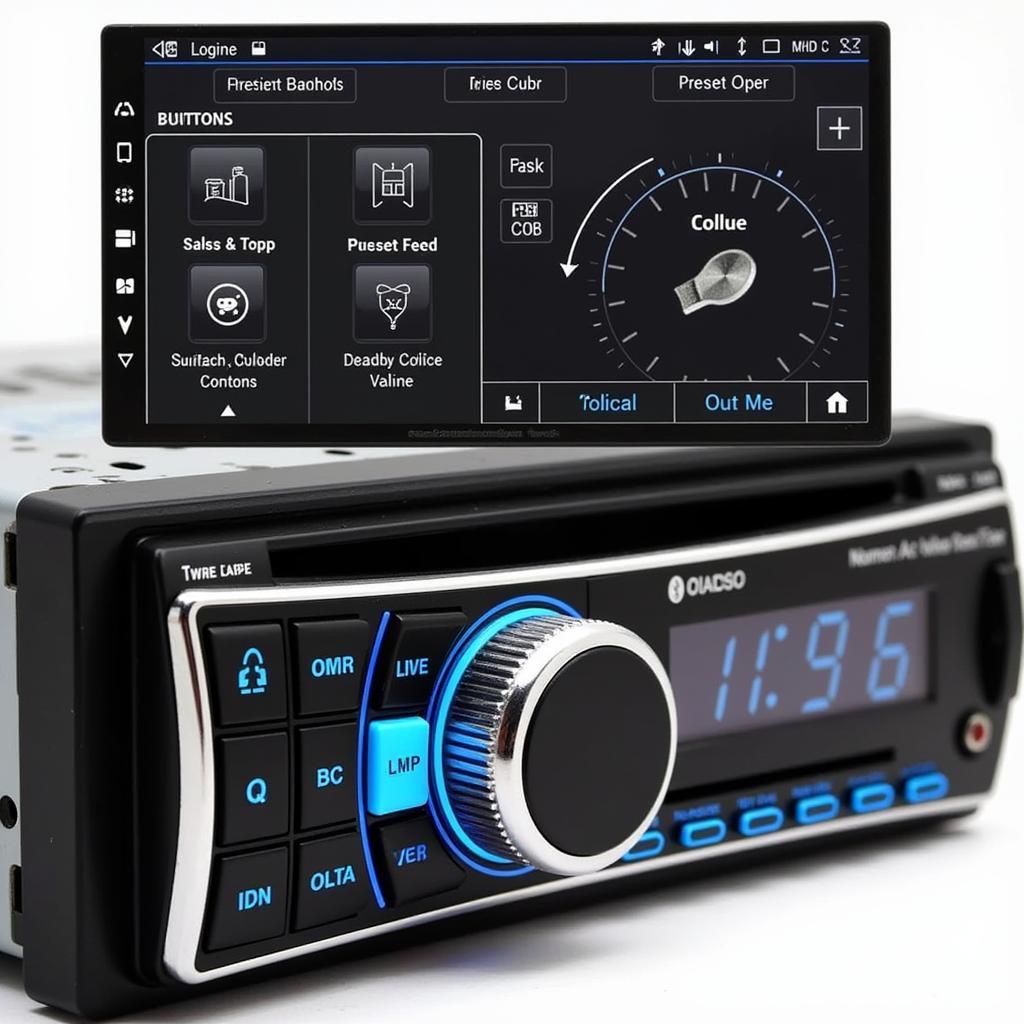The annoying “beep, beep, beep” of your VW Golf Mk6’s seat belt warning sound can be a persistent nuisance. Whether it’s a faulty sensor, a wiring issue, or a software glitch, this article will guide you through the common causes and provide practical solutions to silence that persistent chime. We’ll explore everything from simple DIY fixes to more advanced diagnostic techniques.
Understanding the Seat Belt Warning System in Your VW Golf Mk6
The seat belt warning system in your Mk6 is designed to enhance safety by reminding occupants to buckle up. It consists of sensors in the seat belt buckles, wiring harnesses, and a control module that triggers the audible warning chime and often a visual warning light on the dashboard. Understanding how these components interact is crucial for effective troubleshooting.
Common Causes of the VW Golf Mk6 Seat Belt Warning Sound
Several factors can contribute to a malfunctioning seat belt warning system. These include:
- Faulty Seat Belt Buckle Sensor: The most common culprit is a damaged or worn-out sensor in the buckle itself.
- Wiring Issues: Damaged or corroded wiring within the seat belt system can disrupt the signal flow.
- Software Glitches: Occasionally, a software malfunction in the car’s control module can trigger the warning even when the seat belt is fastened.
- Seat Occupancy Sensor Issues (Passenger Side): If the passenger seat occupancy sensor malfunctions, it may incorrectly detect a passenger and trigger the warning, even when the seat is empty.
DIY Troubleshooting and Fixes for the Seat Belt Warning Sound
Before rushing to a mechanic, try these simple DIY fixes:
- Check the Buckle Connection: Ensure the seat belt is fully clicked into the buckle. Sometimes a slight misalignment can trigger the warning.
- Inspect the Wiring: Visually inspect the wiring under the seat for any signs of damage, fraying, or corrosion.
- Clean the Buckle: Use compressed air or a cotton swab and some electrical contact cleaner to clean the inside of the buckle. This can often resolve issues caused by dust or debris.
When DIY Doesn’t Work: Advanced Diagnostics and Solutions
If the DIY fixes don’t resolve the issue, more advanced diagnostic procedures might be necessary:
- OBD-II Scanner: Use an OBD-II scanner to read diagnostic trouble codes (DTCs) related to the seat belt system. This will pinpoint the specific area of the problem.
- VCDS (VAG-COM): VCDS, a specialized diagnostic software for Volkswagen vehicles, provides more in-depth access to the car’s systems and allows for more precise diagnostics and even software adjustments.
- Professional Diagnosis: Consult a qualified automotive electrician specializing in VW vehicles. They have the expertise and tools to diagnose and repair complex electrical issues.
Remote Software Solutions and Programming
In certain cases, the seat belt warning issue might stem from a software glitch. Remote software solutions and programming, utilizing tools like VCDS, can sometimes rectify these problems. However, this requires specialized knowledge and tools, so it’s best left to professionals experienced in VW software.
“Often, a simple software update can resolve persistent seat belt warning issues in the Mk6,” says John Smith, a certified VW technician with over 15 years of experience. “Using VCDS, we can access the car’s control module and apply the latest software updates to address known bugs and glitches.”
Preventing Future Seat Belt Warning Issues
- Regular Maintenance: Periodically inspect and clean the seat belt buckles and wiring to prevent future problems.
- Careful Handling: Avoid slamming the seat belt buckle or putting excessive strain on the wiring.
- Prompt Repairs: Address any wiring or sensor issues as soon as they are detected to prevent further damage.
Conclusion
The persistent seat belt warning sound in your VW Golf Mk6 can be frustrating, but with the right approach, it can be resolved. By following the troubleshooting steps outlined in this article, you can pinpoint the cause of the problem and implement the appropriate solution, from simple DIY fixes to more advanced diagnostic and software solutions. Don’t let that annoying beep ruin your driving experience – take control and silence the chime!
“Remember, addressing seat belt warning issues isn’t just about silencing an annoying chime; it’s about ensuring the proper functioning of your safety systems,” adds Mr. Smith. “A functioning seat belt system is crucial for protecting you and your passengers in the event of an accident.”
FAQ
- Can I disable the seat belt warning sound completely? While technically possible with software modifications, it is strongly discouraged for safety reasons.
- How much does it cost to fix a faulty seat belt buckle? The cost varies depending on the specific issue and labor rates, but it can range from a relatively inexpensive DIY fix to a more costly repair involving sensor replacement.
- Is it safe to drive with a faulty seat belt warning system? While the car will still operate, a faulty system could indicate a more serious underlying problem and might compromise your safety in an accident.
- Can I use any OBD-II scanner to diagnose seat belt issues? While most scanners can read basic codes, a VW-specific scanner like VCDS offers more comprehensive diagnostics.
- What should I do if the warning persists even after replacing the buckle? Consult a qualified automotive electrician for further diagnosis. There might be a wiring or software issue.
- Can a low battery cause the seat belt warning sound to malfunction? While unlikely, electrical system issues caused by a low battery can sometimes trigger erratic behavior in various car systems, including the seat belt warning.
- How can I prevent damage to the seat belt wiring? Avoid placing heavy objects under the seats and be mindful of the wiring when adjusting the seats.


